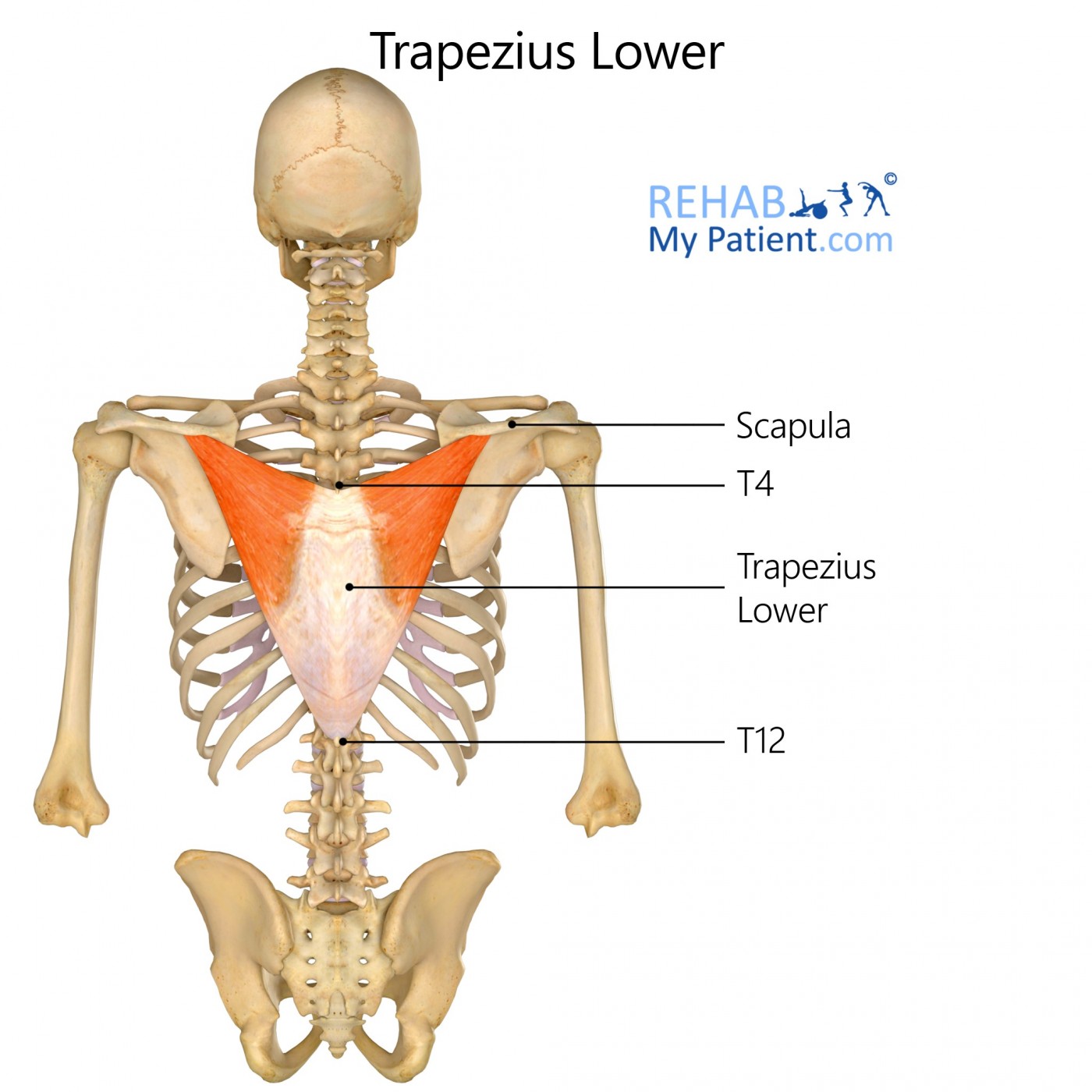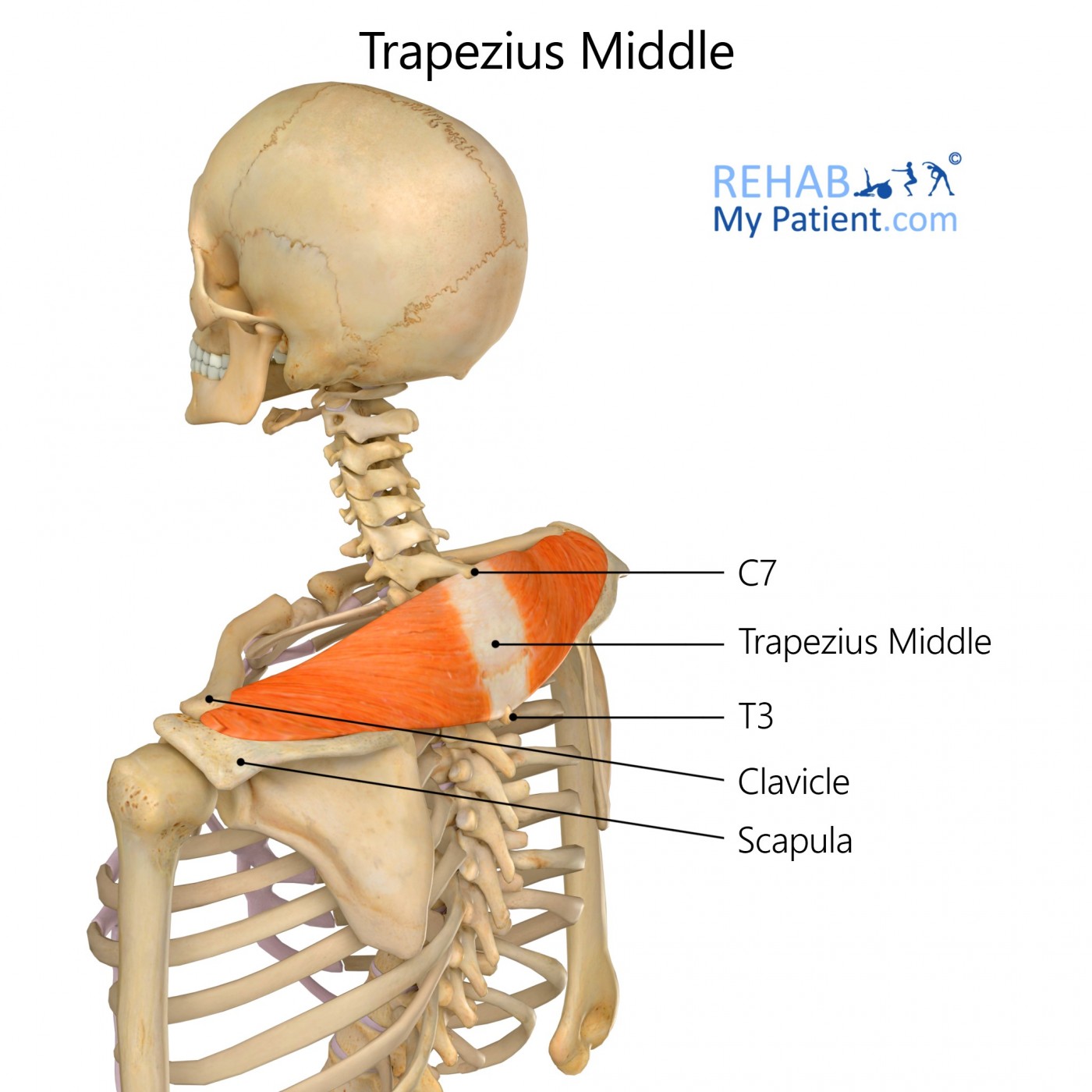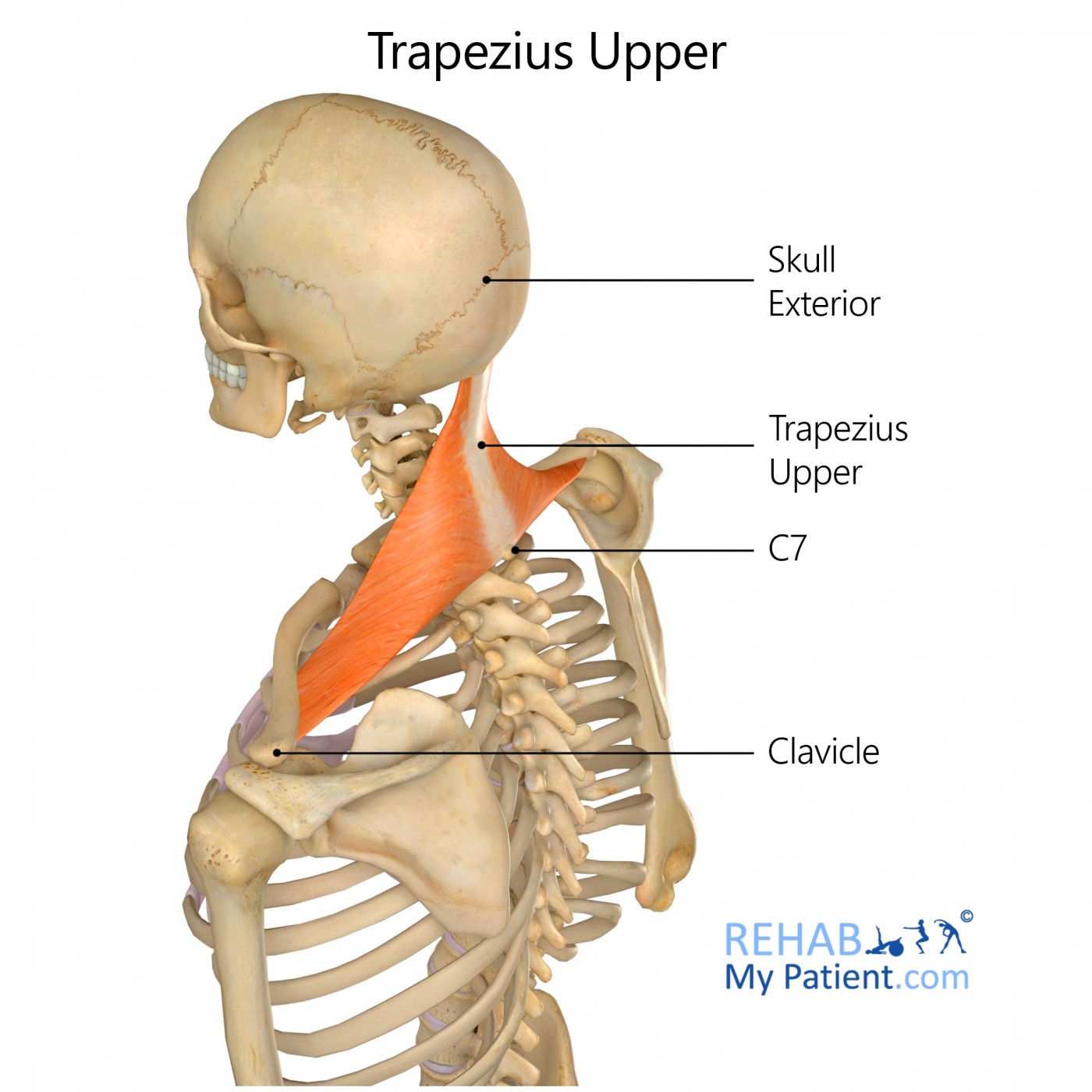
General information
The trapezius is a superficial muscle extending longitudinally out of the occipital bone and to the lower thoracic vertebrae and to the scapula’s spine laterally. Its primary functions are to support the arm and move the scapulae. There are three main regions in the trapezius: the superior region that supports the arm’s weight, the inferior region that depresses and rotates the scapulae medially and the intermediate region that retracts the scapulae.
Literal meaning
Four-legged table.
Interesting information
When dealing with trapezius muscle pain, a strain or injury in the muscles might be an indicator that your stress levels are increasing. The pain will often feel like a burning or aching sensation located between the shoulder blades, but it can also radiate from the skull base. The trapezius muscle helps support upper body movements in the shoulders, head, neck, and arms. Muscle pain will often involve stiffness and pain within the muscle itself. For some individuals, the pain may feel as if there are knots in the back or it might be tender to the touch.
Pain can result from tension, stress, exercise, repetitive motions, and regular daily life. Any of these activities can cause the trapezius to lock up and become painful. Those who sit at a desk or computer all day tend to frequently suffer from this pain. A misaligned computer screen could be enough to cause muscle pain. Repetitive motions are also a factor due to the tissue and muscle’s inability to rest and relax.
Origin
External occipital protuberance, spinous processes for the seventh cervical and thoracic vertebrae and the nuchal ligament.
Insertion
Lateral third for the clavicle, acromion, and spine for the scapula.
Function
Upward rotation for the glenoid cavity.
Adduction of the scapula.
Depression of the scapula.
Extension of the head.
Stabilises the scapula and the associated glenoid cavity for improving functional efficiency for the muscles that work at the shoulder joint.
Nerve supply
Accessory nerve.
Blood supply
Superficial cervical artery.
Transverse cervical artery.
Suprascapular artery’s branch.
Posterior intercostal artery’s perforating branches.
Occipital artery.



Relevant research
The purpose of the study was investigating the effect of acute trapezius pain brought on by Delayed Onset of Muscle Soreness (DOMS), on habitual trapezius activity. Long-term Surface Electromyographic (sEMG) activity was notated bilaterally from the descending, clavicular, ascending, transverse trapezius on two consecutive days in 11 female subjects aged between 20 and 24 years old. Arm and body posture were recorded using inclinometers. Directly after the first long-term recording, subjects performed an eccentric depression exercise with the left shoulder, to bring on DOMS.
The study found that acute trapezius pain causes elevated habitual trapezius activity in times where there is low biomechanical loading of the shoulder and neck muscles, with elevated sEMG activity limited to the painful part of the muscle. This is in contrast with the pain-adaption model, showing a correlation between acute muscle pain and elevated low-muscle activity. It is still not known whether there is an initial period of elevated muscle activity before chronic muscle pain develops.
Wakefield E, Holtermann A, Mork PJ. The effect of delayed onset of muscle soreness on habitual trapezius activity. Eur J Pain. 2011;15(6):577-583. doi:10.1016/j.ejpain.2010.10.012.
Trapezius exercises
Dumbbell upright trapezius row
To perform the exercise, grab a pair of dumbbells with the palms facing toward the body. Bring the arms upward as close to the body as possible. Make sure to only lift until the upper arms are parallel to the floor. Return the weights slowly to the starting position. Perform this movement for 10 repetitions.
Sign Up
Sign up for your free trial now!
Get started with Rehab My Patient today and revolutionize your exercise prescription process for effective rehabilitation.
Start Your 14-Day Free Trial